VIA DOMITIA - Loupian
Villa de Loupian
This excavated Roman villa, plus museum and guide, is situated between the modern villa of Loupian and the étang de Thau, and is famous for its mosaics. (The Via Domitia passed it a little to the north of today's A9 autoroute.) On 3rd April 2010 I went with the Association Via Aquitana to visit this site. One is obliged to book a tour with a guide, by the way; one cannot wander around alone although, being a large group, we could detach ourselves a little to take photos.
First we saw a series of murals, which clearly showed the position of the villa, on a south-facing slope overlooking the sea. (The Romans nearly always built on a south-facing slope.) 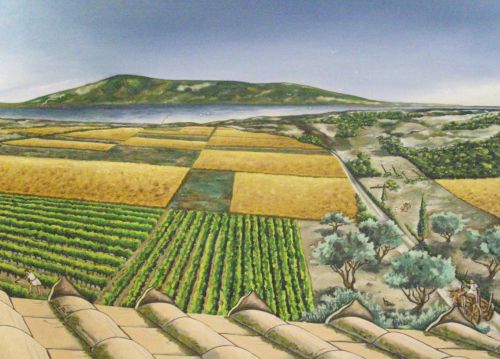
You can see the étang de Thau as it was in Roman times, with the island on which now is Sète. The road from the villa to the sea is shown on the right of the picture. The Romans loved fish and shellfish; they would have gone to the waterside everyday to pick up supplies. You can see olives trees, vines and fields of grain, for this was a sort of self-supporting domain. Also nearby (not shown on this picture) were quarries for building stone.
In the first rooms of the museum were many glass cabinets showing scenes from everyday life - the hunters, the vine-growers, the fishermen - and a brief history of the villa, from 100BC until the early 5th century. 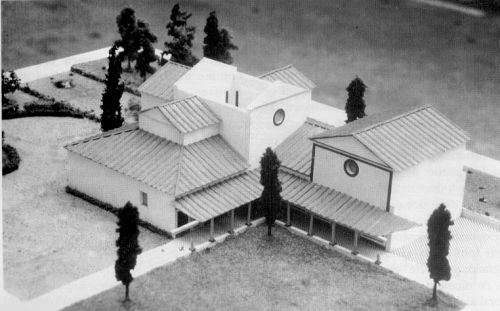
Reconstruction of the villa before it was abandoned after the Visigoths came.
We had already seen a reconstruction of wine preparation, the amphores, the workers, the baths, also a model of the "chapelle paleo-chretien" of the 5th century, maybe Visigothic. 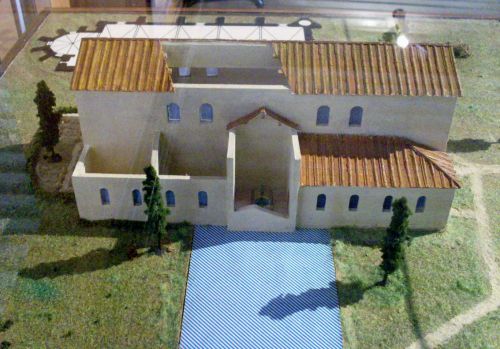
The remains of thie chapel/church can be seen in the nearby village of Loupian, all exposed, you can walk around them, but I was in somebody else's car and they said we didn't have time to stop . . .
To see the mosaics, for which Loupian is famous, you have to cross the land behind the museum to enter a hangar, constructed to protect the mosaic floor from the weather. The guide explains everything and you have to walk along walkways to view the exhibits. You can imagine the life as it was lived by the Roman bosses. 
The mosaics were wonderful! In fact, this is what Loupian is famous for, world-wide. These were the last ones done before the villa was abandoned. The style is called Byzantine, from the second half of the fourth century. An artist came from the Near East to do it. 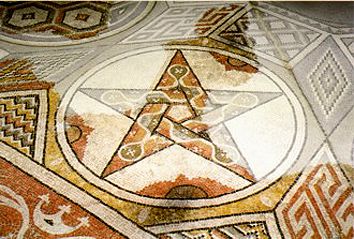
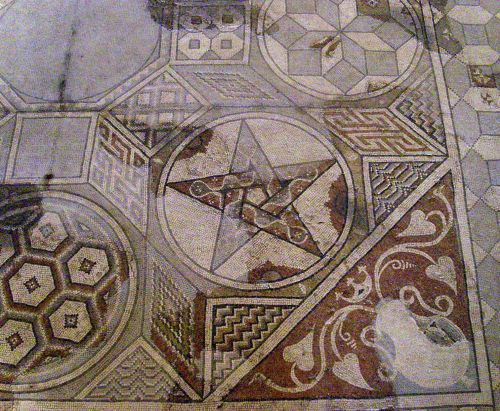
Have a look at the mosaics from the second century at La Vernède in our article - quite different. The Byzantine style is more ornamental, more florid, less real images of real people and animals.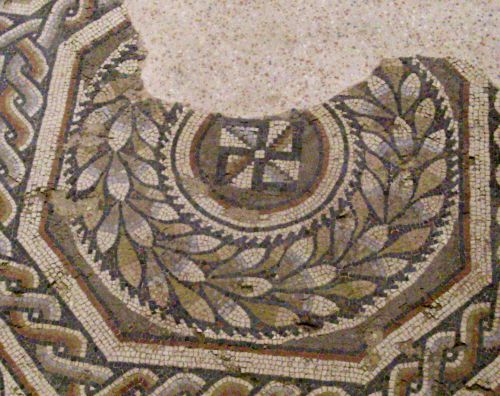
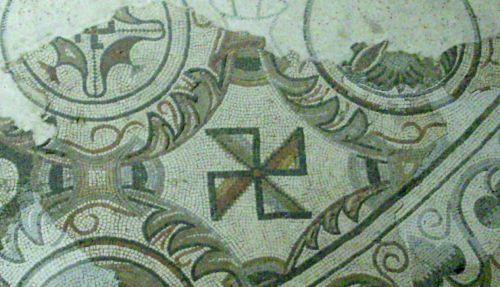
The Syrian symbolisme is a little bit magic and typical of the period. 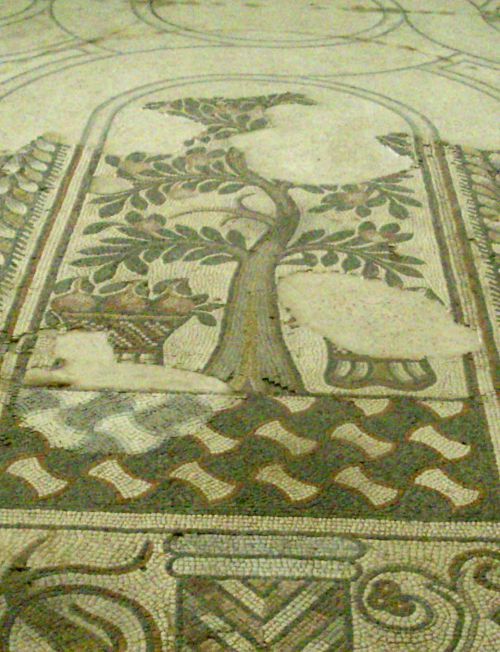
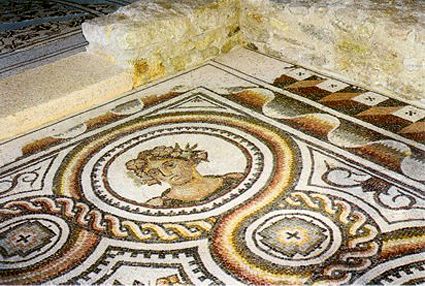
The tour continued for more than two hours. nd then we went to nearby Bouziques for a sea-food lunch.
For an interesting site in English - click here
Inscrivez-vous au blog
Soyez prévenu par email des prochaines mises à jour
Rejoignez les 16 autres membres
